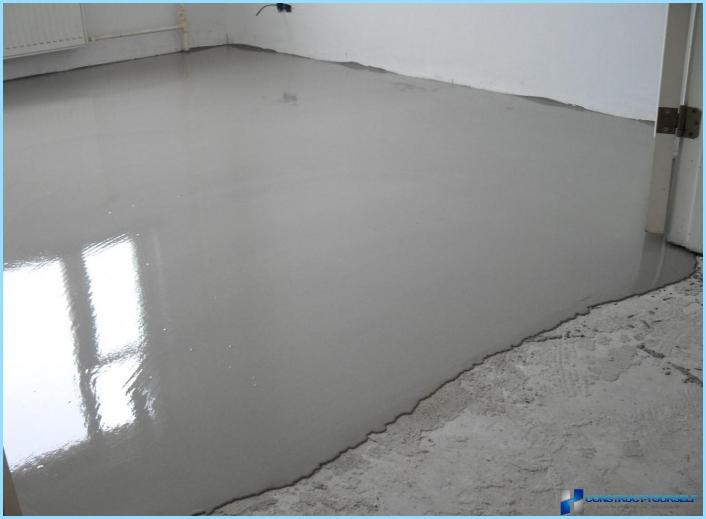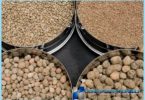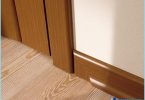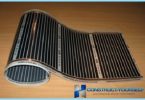The contents
Cleaned the surface with no visible flaws – a mandatory requirement when making a floor, regardless of the finishing material. To ensure the necessary conditions will help self-leveling, the main purpose of which is to leveling the floor.
The nuances of the technological process ↑
The main components of self – leveling composition is Portland cement, fine quartz sand and polymer additives, forming the ready-mix of specific performance. Buying ready-made mixture, you will receive a solution, which is characterized by accelerated adhesion and shortened the period of complete drying. After full curing, self-leveling mixture on the floor formed a smooth and elastic coating, completely ready for installation of the final lining.
For each stage of leveling floor manufacturers offer a variety of self-leveling compounds, differing in composition and purpose. Their choice depends on the initial condition of the floor, conditions for further operation, type of floor covering. The whole range of self-leveling compounds can be divided into three groups:
- Compositions intended for rough flooring. Their characteristic feature – the ability to create a thick layer for floor leveling.
- The finishing of the mixture are characterized by a greater fluidity, are applied to remove small irregularities. Typically, the thickness of one layer is 2-10 mm.
- Special formulations for the elimination of local problems. They are used for sealing deep cracks or gouges.
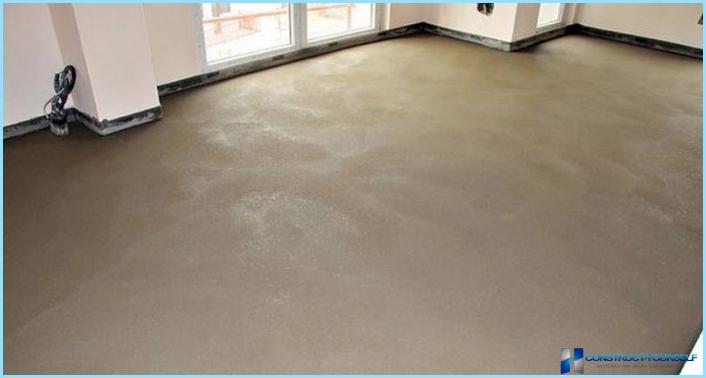
To level the floor with leveling composition, you must:
- Carefully prepare rough surface.
- To decide on the method of alignment and choose the right mix.
- To calculate the number and thickness of layers.
- To determine the amount of required solution and prepare it.
- To make a fill composition.
To level the floor should be with strict observance of all manufacturers ‘ instructions and recommendations of specialists. The delay is not allowed, otherwise the alignment will turn out poorly.
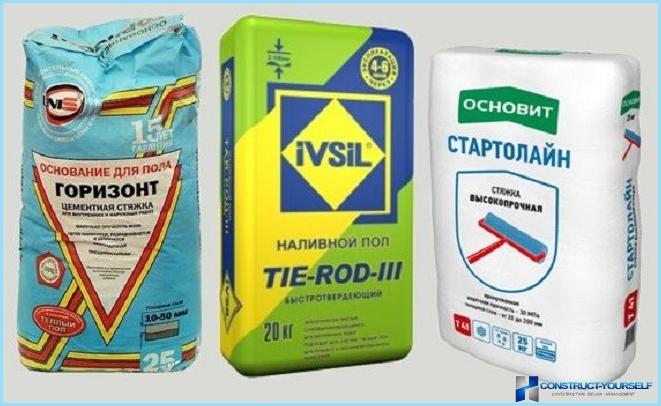
The definition of the scope of work ↑
Procedure align the wooden or concrete floor usually takes place in several stages using different types of self-leveling compounds. Align the rough basis of manufacturers offer compositions of coarse grinding. In consistency they are similar to dense sand-cement mortar. Uniform distribution of the mixture is facilitated by the use of special tools. When using compositions based on cement, the maximum thickness of 1 layer is 6 cm, plaster solutions allow you to form a layer 15 cm.
Levelling compound ensure a quality final levelling of the floor. This is due to good fluidity of solution, is intended to correct minor roughness or irregularities. The maximum thickness of the formed layer is indicated on the bag of self-leveling mixture typically does not exceed 1.5 cm, but experts recommend a limit of 8 mm in one fill.
The estimated amount of work in a variety of situations can be as follows:
| Condition | The necessary composition |
| The difference in horizontal level on the concrete floor not more than 3 mm | Leveling the mortar in one layer |
| Significant damage and potholes on the concrete surface | The dry mix of coarse and leveling the mixture in 1 layer |
| Hardwood floor surface | Gypsum dry mix in 1 layer, and then leveling the mixture containing fiber |
| Alignment of insulation | Starting self-leveling gypsum-based with mandatory installation of reinforcing mesh. When working in areas with high humidity apply cement lineups. |
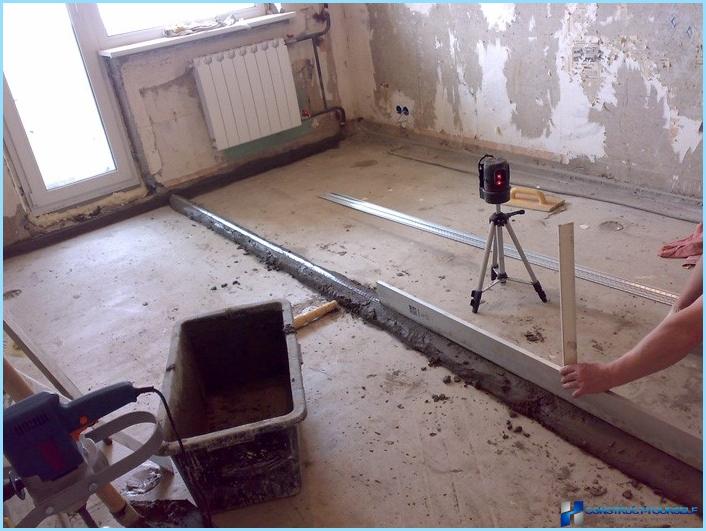
Calculation of material consumption ↑
To determine the number of required material in two ways. In the first case use the average values. So, consumption of self-levelling finishing mortar is 17-18 kg per 1 mTwo at a layer thickness of 10 mm. to line the floors in the room is 4×5 m, one layer of 10 mm, you will need: 4 x 5 x 18 x 1 = 360 kg. In one bag is 25 kg of solution, so buy should: 360/25=14.4 per bag (i.e. 15 packs).
Before applying the leveling of the mass of the floor surface needs to be processed primer composition. Its consumption varies in the range of 0.1-0.3 kg per 1 mTwo. For our conditional room: 4 x 5 x 0.3 = 6 kg.
The second variant of calculations is much more complicated, it takes into account all the specific details:
- definition «zero» thickness;
- the calculation of the coating layer;
- the calculation of the surplus layer (exclusively in waterproofing and reinforcement surface);
- the summation of the results.
This approach ensures economical consumption of materials and create more high quality floor leveling due to the formation of several minimal layers.
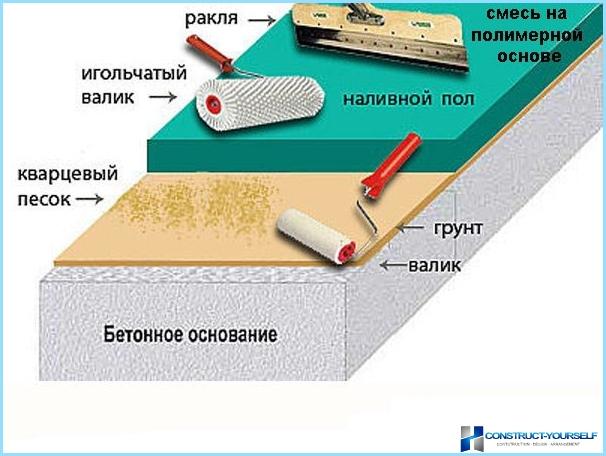
Surface preparation ↑
Regardless of the technical condition and the material of the base before the finish leveling floor self-leveling mortar surface in need of training. Standard preparatory process involves the following steps:
- the elimination of severe cracks and damage;
- processing base primer mixture;
- waterproofing of the floor surface.
In some situations held insulation base with application of the reinforcing layer. But this procedure is performed during the formation of the cement screed before levelling the finish composition.
Revision of the wood surfaces begins with the General survey. Wood parts need to fit snugly to the subfloor. If the Board of «walk», you need to measure deviations using weights. Permissible limit deviation of 1.2 mm at 1 mTwo, if it is exceeded, the wooden floor needs to be bulkhead design.
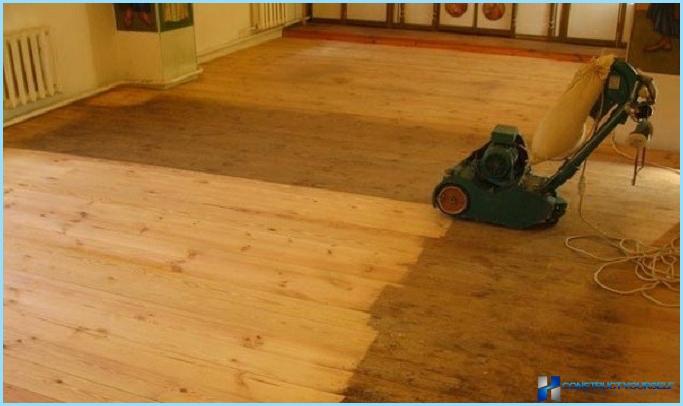
When leveling self-leveling compound wood floor, the preliminary elimination of defects is carried out by jointing. Its essence is as follows: on plate, suitable for repair, every 25 cm form indentations perpendicular to the flaws. Sizes of cuts: thickness about 3 mm, depth 50 mm, length – 20 cm, Such a termination prevents the destruction of the floor surface due to the uniform load distribution. After the elimination of all deviations sealing cracks is carried out by wet sawdust containing adhesive mass.
Grease and oil stains are removed by mechanical means or using the solution. Then the floor cleaned of debris. To increase the roughness of the surface treatment with sandpaper or installation of fiberglass mesh. At the final stage of preparation before leveling the floor undergoing priming.
When preparing a floor surface for leveling self-leveling mortar over the damper tape to protect the walls of the attached plastic film. It will provide high-quality waterproofing.
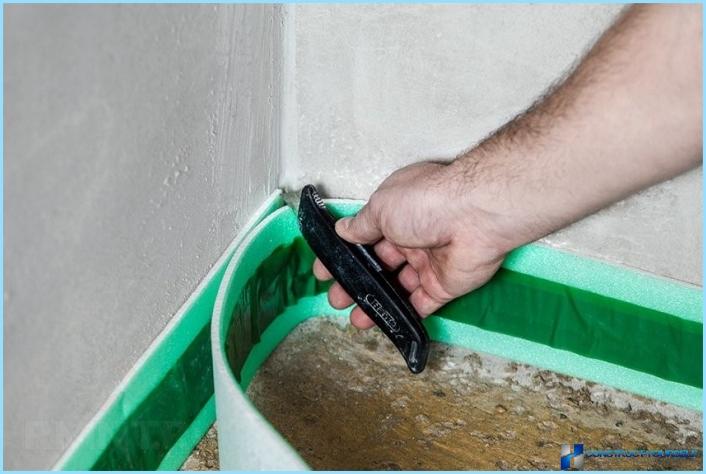
Cook the mixture and fill procedure ↑
Self-leveling mix for floor leveling is prepared as follows:
- The dry mixture is placed in a container, whose volume exceeds 30 l.
- Water is added strictly in the quantity specified in the manufacturer’s instructions self-leveling mixture. In the case of excess liquid coating is not strong enough, and the lack of water will impede the process of spreading self-leveling mortar.
- Prepared for floor leveling mortar must be used within 30 minutes. After the allotted time it will start to harden.
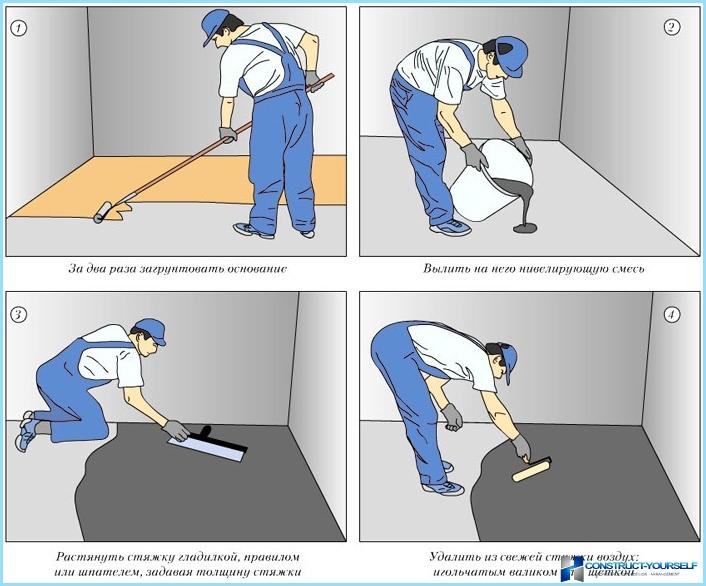
Key stage leveling floor – filling compound. The procedure is best done with a partner when one is engaged in the preparation of the solution, the second distributes the self-leveling mix. For the formation of a layer of the desired thickness on the walls of the previously applied markup. To comply with horizontal lines will help building level. For quality floor leveling, it is recommended to apply a self-levelling compound thin layer (preferably up to 5 mm). Its temperature should not exceed 25onWith, otherwise the hardening process will accelerate.
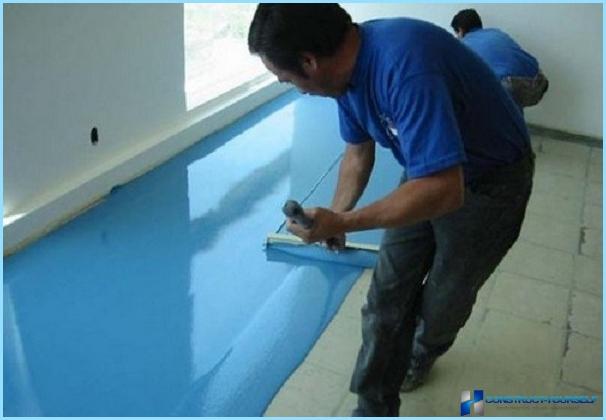
Pouring self-leveling mixture starting from the far wall, gradually moving to the exit. The procedure of pouring the floor in a large room it is better to organize bands. It is recommended each following band to do with the influx of the previous one. It is necessary to work at an accelerated pace, below the previous band doesn’t freeze up the connection to the subsequent. To eliminate air bubbles and qualitative leveling floor self-leveling compounds are needle roller.
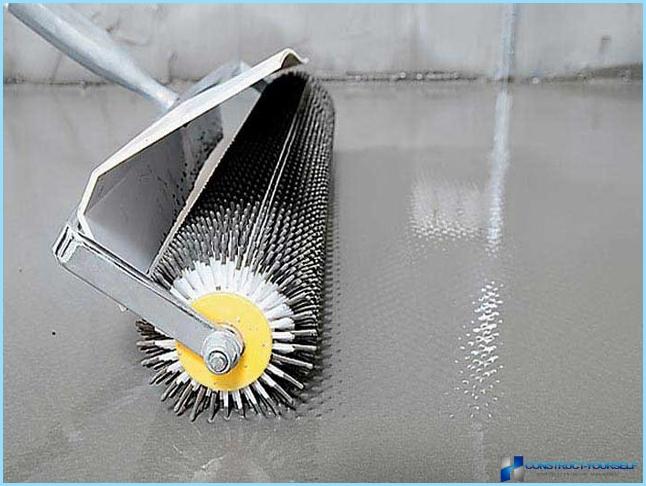
The process of drying and complete curing, self-leveling mixture applied varies depending on the number and thickness of layers, the ambient temperature and the selected material manufacturer. At the end of the process (the maximum period is 3 weeks) transition to installation of lining.

